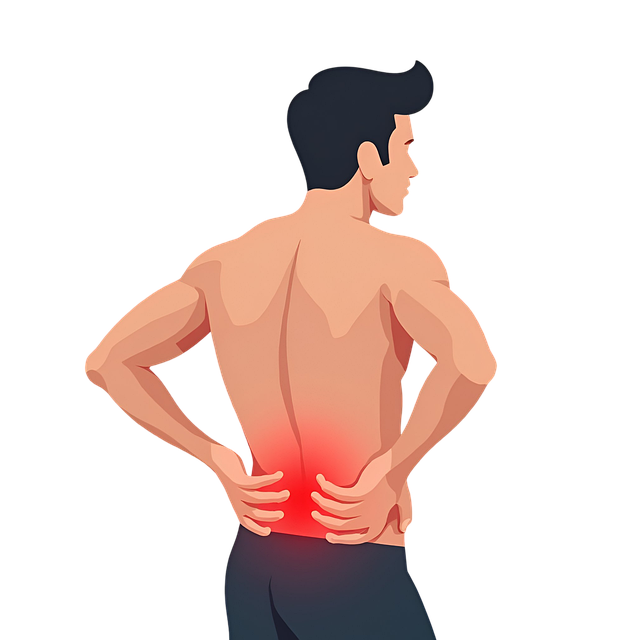Chronic pain, affecting millions globally, lacks the warning signs of acute pain and impacts mental health & daily life. Opioids are commonly used but carry risks. Acupuncture, an ancient Chinese practice involving inserting thin needles into specific body points (acupuncture points), offers a safe, non-invasive alternative for conditions like back/neck pain, migraines, and inflammation. It stimulates healing, reduces inflammation, and relaxes muscles with minimal side effects compared to medications, making it a popular drug-free option for chronic pain management.
Tired of relying on medications for chronic pain relief? Explore the ancient practice of acupuncture as a drug-free alternative. This natural healing method targets back pain, neck stiffness, and other persistent aches without harmful side effects.
Learn how acupuncture works its magic, discover its numerous benefits, and understand the process involved in these targeted treatments. We’ll guide you through finding qualified acupuncturists and setting realistic expectations for achieving lasting relief from chronic pain naturally.
- Understanding Chronic Pain and Its Impact
- Acupuncture: An Ancient Approach to Pain Management
- How Acupuncture Works for Different Types of Chronic Pain
- Benefits of Choosing Drug-Free Pain Relief with Acupuncture
- The Process of Acupuncture Treatments for Chronic Pain
- Finding Qualified Acupuncturists and Setting Realistic Expectations
Understanding Chronic Pain and Its Impact

Chronic pain is a complex condition that affects millions worldwide, often leading to significant physical and emotional distress. It’s defined as persistent pain that lasts for more than 12 weeks, beyond the typical recovery period for an injury or illness. This long-term pain can arise from various sources, including injuries, conditions like arthritis or fibromyalgia, nerve damage, or even stress and anxiety. Unlike acute pain, which serves as a warning signal, chronic pain continues without providing any beneficial function, making it challenging to manage effectively.
The impact of chronic pain is profound, affecting not only an individual’s physical well-being but also their mental health and overall quality of life. It can disrupt sleep patterns, limit mobility, and make even simple daily tasks difficult. Many people struggling with chronic pain turn to opioids for relief, but these medications come with serious risks and potential dependencies. As a result, individuals seeking non-opioid pain relief alternatives are increasingly exploring complementary therapies like acupuncture. Acupuncture has shown promise in treating various chronic conditions, including back and neck pain, migraines, and inflammation, offering a drug-free approach to managing pain and improving overall well-being.
Acupuncture: An Ancient Approach to Pain Management

Acupuncture, an ancient practice that has been used for thousands of years, offers a natural and drug-free approach to managing chronic pain. This traditional Chinese medicine technique involves inserting thin needles into specific points on the body, known as acupuncture points, to promote balance and restore energy flow. When it comes to alleviating back pain, neck stiffness, sciatica, migraines, and other forms of chronic pain, acupuncture has gained significant recognition as an effective alternative treatment.
By targeting these specific acupuncture points, practitioners aim to stimulate the body’s natural healing response, reduce inflammation, and relax muscles, providing long-lasting relief from pain. Unlike opioids or other medications that may come with side effects and dependency issues, acupuncture offers a safe and non-invasive method for managing pain without the risks associated with prescription drugs. It is a holistic treatment option that considers the body as an interconnected system, addressing not just the symptoms but also the underlying causes of chronic pain conditions, such as stress or poor posture.
How Acupuncture Works for Different Types of Chronic Pain

Acupuncture, an ancient practice that involves inserting thin needles into specific points on the body, has gained popularity as a drug-free approach to managing chronic pain. Its effectiveness in alleviating various types of pain is well documented, making it a compelling option for those seeking alternative treatments. For individuals suffering from chronic back and neck pain, acupuncture offers a unique way to disrupt pain signals and promote natural healing. Needles are strategically placed to target areas affected by inflammation, stimulating the release of endorphins, the body’s natural painkillers.
Moreover, acupuncture has proven beneficial for conditions like sciatica, migraine headaches, and joint pain. In the case of sciatica, needles can reduce pressure on nerve roots, easing radiating pain in the legs. Migraine acupuncture focuses on specific points to prevent and mitigate headache intensity. For joint pain therapy, this ancient practice can improve mobility, reduce inflammation, and provide much-needed relief. The versatility of acupuncture makes it a valuable tool in managing chronic pain symptoms without relying on medications, offering patients a holistic and natural approach to their well-being.
Benefits of Choosing Drug-Free Pain Relief with Acupuncture

Choosing drug-free pain relief options like acupuncture can be a transformative decision for those suffering from chronic pain conditions. Acupuncture offers a natural and safe approach to managing back, neck, and sciatica pain, among others, without relying on opioids or other medications. It’s an effective inflammation treatment that targets the root causes of pain rather than just masking symptoms.
By tapping into specific points on the body, acupuncture promotes the release of endorphins, your body’s natural painkillers, which can significantly reduce discomfort and improve mobility. Unlike non-opioid pain relief methods, acupuncture has minimal side effects and is well-tolerated by most patients. This ancient practice provides a holistic approach to wellness, addressing not just the symptoms but also the overall health of the individual, making it a compelling alternative for those seeking chronic pain management.
The Process of Acupuncture Treatments for Chronic Pain

Acupuncture for chronic pain involves inserting fine needles into specific points on the body to stimulate natural healing responses. This ancient practice targets areas that contribute to pain, such as nerve endings and muscle tissues, with the goal of reducing inflammation and promoting relaxation. The process begins with a thorough consultation where a qualified acupuncturist assesses your symptoms, medical history, and overall health. They use this information to create a personalized treatment plan tailored to target specific aspects of your chronic pain, whether it’s back pain, neck pain, or migraine headaches.
During the actual treatment, you’ll lie down on a comfortable surface while the acupuncturist gently inserts the thin needles into predetermined acupuncture points. The needles are typically left in place for 20-30 minutes, during which time you may feel a dull or tingling sensation—a sign that the body is responding positively to the treatment. Acupuncture sessions often occur once a week initially, with the frequency reducing as your condition improves. Over time, many individuals find relief from chronic pain and a significant improvement in their quality of life through regular acupuncture treatments. Additionally, practices like sciatica acupuncture focus specifically on alleviating leg pain associated with sciatic nerve irritation, showcasing the versatility of this natural approach to inflammation treatment.
Finding Qualified Acupuncturists and Setting Realistic Expectations

When exploring chronic pain acupuncture as a solution for back, neck, or other types of pain, finding qualified acupuncturists is paramount. Start by looking for practitioners who are certified and licensed by recognized organizations in your area. Reputable acupuncturists often have extensive training and experience treating various conditions, including chronic pain. Online reviews can provide valuable insights into a practitioner’s reputation and the success stories of their patients.
Setting realistic expectations is crucial when considering acupuncture for pain relief. While it can be an effective inflammation treatment and alternative to non-opioid pain medication, results may vary from person to person. Some conditions, like migraine acupuncture, might show immediate improvements, while others may require several sessions for optimal effect. Acupuncturists typically create personalized treatment plans, so discuss your goals openly. Be prepared for a commitment of regular appointments to achieve the best outcomes and understand that managing chronic pain is often an ongoing process.
